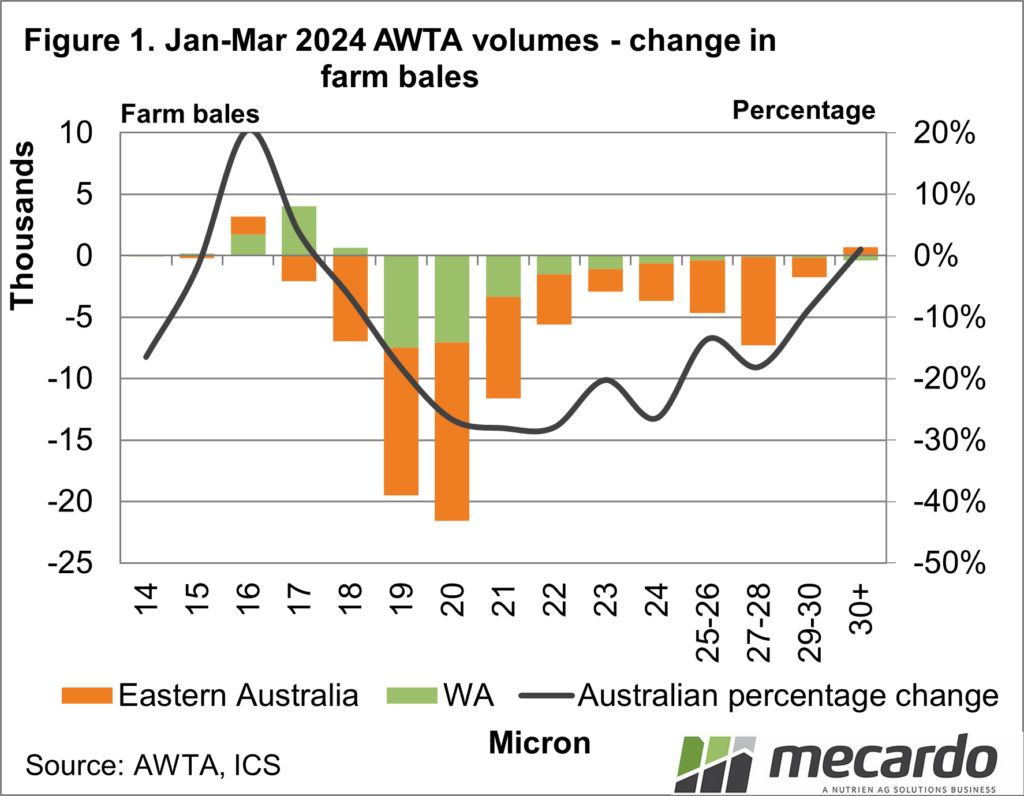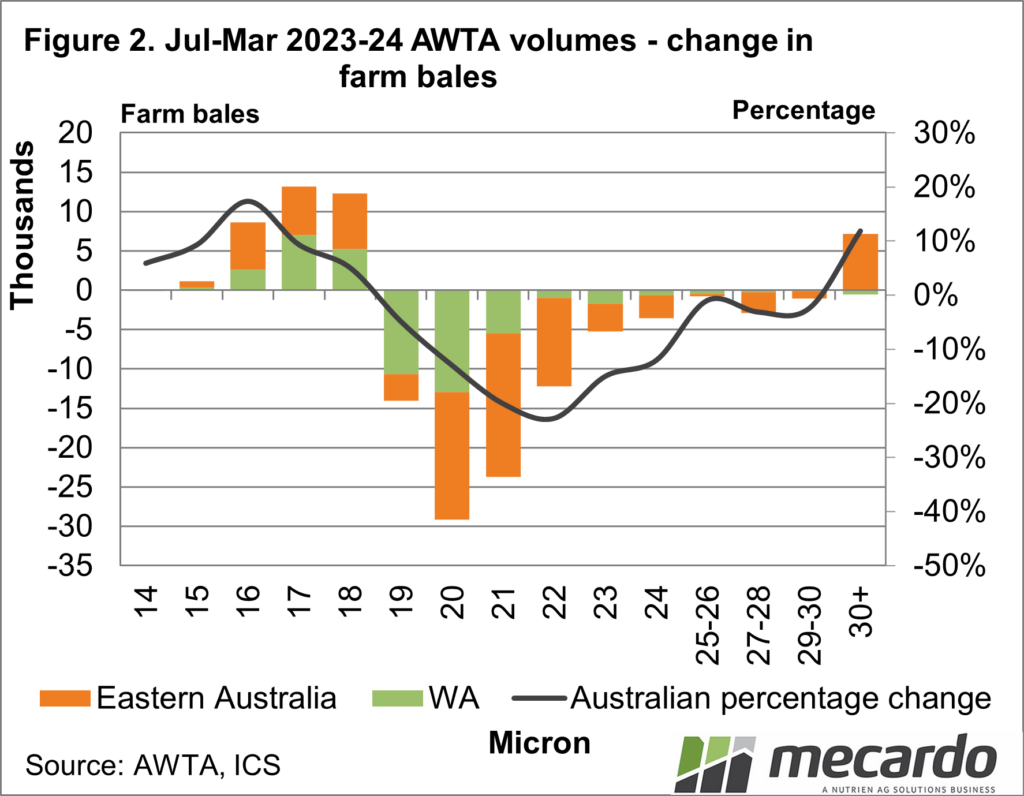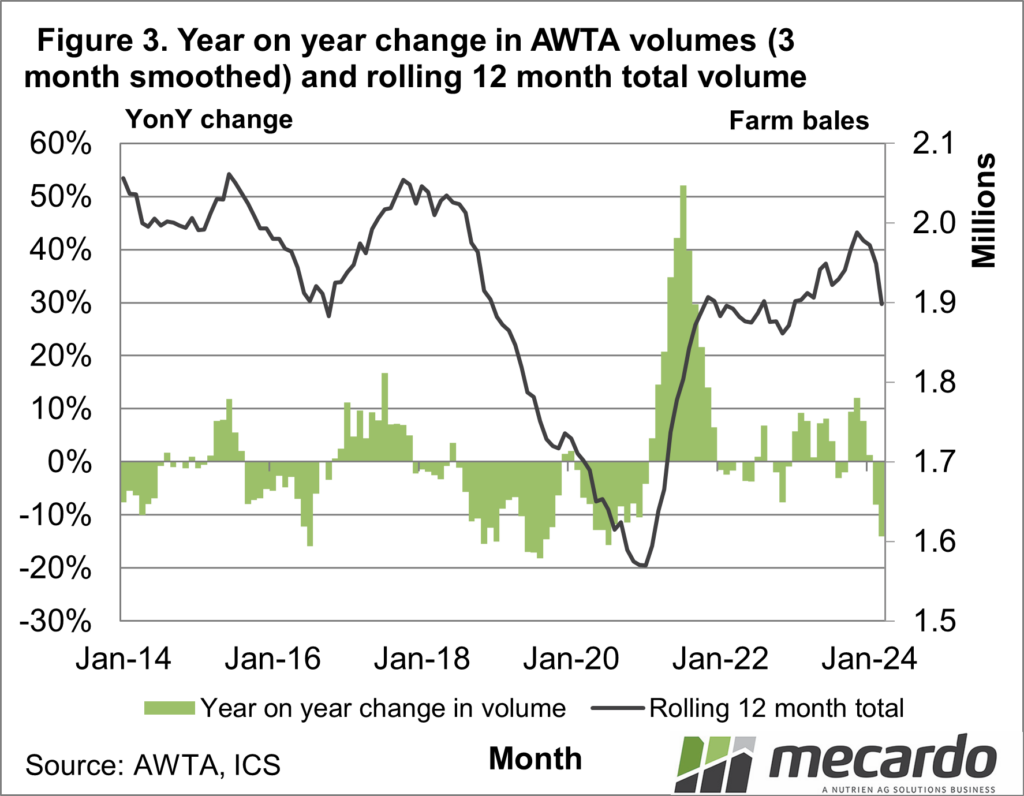Wool supply this season in Australia has been anything but smooth, with a big surge coming early in the season and now supply is dropping sharply compared to year earlier levels. With this volatility of supply in mind we take a look at the latest AWTA volumes.
Commentary on wool production tends to focus on total volume
which glosses over the marked variation in production changes and demand
between micron categories (see page 25 in this report). While total volume is important,
individual micron supply changes are more volatile and are relevant to
particular sections of the market.
Figure 1 shows the change in eastern and Western Australian
volumes (farm bales – left hand vertical axis) by micron for the March quarter
compared to the same period a year ago. The proportional change by micron for
the Australian clip is also shown by the line which refers to the right hand
vertical axis.
In absolute farm bale terms, the 19 and 20 micron categories
have suffered the largest drop in supply (down by around 20,000 bales each). In
percentage terms it is the 20 to 22 micron categories which have suffered the
largest drop (down by a large 27-28%). Crossbred volumes have also fallen. Only
the 16-17 micron categories have seen an increase in supply, reflecting the
swing finer in micron resulting from the dry spring. This shows up most clearly
in the Western Australia with 16 to 18 micron volumes increasing, with 19
micron and broader volumes decreasing.
While week to week volumes offered at auction impact price,
the cumulative effect of price (the trend or cycle if it exists) by supply is
better looked at by longer term changes in supply. Figure 2 repeats the format
of Figure 1 showing the season to date (July to March) change in AWTA volumes.
The season to date change shows an increase in the 16 to 18
micron volumes (interestingly fairly evenly split between the east and west) in
the order of 10% to 20%. On the broader side of the merino production (19
through 23 micron) supply is well down. These changes show why the pressure in
the market has been to decrease the price difference between fine and broad
merino prices. Crossbred AWTA volumes are down by around 2%, which contrasts
with auction sales which are up by 8% meaning crossbred greasy stock have been
topping up auction volumes.
To put the changes in supply in context Figure 3 shows the
year on year change in total volumes (bars – left hand vertical axis) for the
past decade along with a rolling 12 month total AWTA (farm bales – right hand
vertical axis). Supply fell in 2018 through 2020 reflecting the 2017-2019
drought, and then supply rose sharply in 2021 reflecting the improved season
conditions across many regions in 2020. At the same time total volume lifts
from around 1.6 million bales to 1.9 million bales. The rolling 12 month total
steadied around 1.9 million bales until 2023 and then picked up again to finish
late 2023 close to 2 million bales. It has now returned to 1.9 million bales.
Have any questions or comments?
Key Points
§
Most micron category volumes (AWTA) have fallen
in the March quarter
§
Broader merino volumes are suffering the biggest
fall in supply.
§
The rolling 12 month volume tested by the AWTA
has returned to 1.9 million bales after nearing 2 million bales in late 2023.
Click on figure to expand
Data sources: AWTA, ICS, Mecardo















